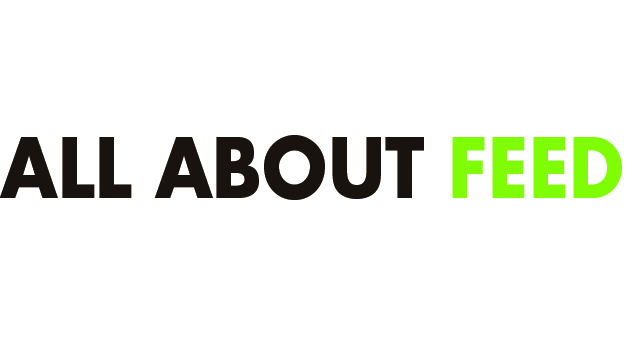 Interview with Emmy Koeleman, Editor at All About Feed
Interview with Emmy Koeleman, Editor at All About Feed
Why is not actually possible to feed animals (pigs, livestock and poultry) with insects-based feed?
At the moment, the current EU legislation doesn’t allow the use of insect meal in food producing animals. Producers of insect meal have to follow a set of EU rules and some of these rules are simply not drafted in such a way to deal with insects, and therefore legislation places insects in the category ‘livestock’. Placing insects in the same category as pigs, poultry and cattle creates the biggest problem. This is because TSE regulation EC 999/2001 forbids to feed livestock to livestock, as agreed on after the BSE scares. Another major obstacle is that insects must be processed in accordance with the EU Animal By-Products Regulation 1069/2009 to become processed animal protein (PAP) before they can be fed to food producing animals. This means that insects have to be ‘slaughtered’ according to the same rules as livestock animals would be slaughtered and processed. Obviously, this is not possible, and an example that current rules cannot handle insects as a separate category. Whole insects that are now used as feed for pets, for example, are often killed by freezing or drying them. In addition, insects producers must follow the EC General Food Law Regulation 178/2002, EC Regulation 854/2004 on food hygiene and EC Regulation 183/2005 on feed hygiene and the Directive EC 2002/32 on Undesirable Substances in Animal Feed. Although compliance of these rules are not the biggest hurdles for insect meal producers.
Is the feed industry really considering edible insects as future feed?
The feed industry is definitely considering insect meal as a valuable alternative protein source for livestock diets. For farmed fish species, it could be a great alternative for fish meal for example. Fish meal is expensive and its use is questioned, as the production of fish meal is using a lot of wild fish to produce it. Many environmentalists are warning that wild fish populations are in danger as a result. The aquafeed sector will probably the first sector to start using insect meal. In 2013, the use of of non-ruminant processed animal protein (PAPs) in aqua feed was re-authorized in the EU. Although not used to a great extent so far in the EU, it would be a relative small step to add insect meal PAP to the list for fish diets. At the same time, whether the use of insect meal really takes off, depends on the volumes that can be produced (at the moment, the volume projection is small and not comparable with the volumes of soy meal or fish meal). I therefore expect it will be a ‘specialty ingredient’ in the beginning, only used for high end salmon diets for example. The price of insect meal will simply be too high in the start-up phase. Nevertheless, industrial production plans are underway. Dutch feed producer Coppens for example hopes to start industrial production of compound feed with insect meal for pig and poultry diets soon. They already use insect fat (produced by Protix) to mix in with feed. Poultry feed with this insect fat is expected to hit the market soon. Insect fat is already allowed to use in livestock diets.
Is the meat industry really considering edible insects as future feed?
I think the main concern for the meat industry is that the meat is safe and accepted by the consumers. Consumers are getting more involved and interested in food production and farming practices and might question feeding insects to food producing animals. Several surveys have been carried out to find out how consumers feel about meat of animals that have been fed with insect meal. One study showed that over 70% of consumers would eat fish, chicken or pork from animals fed on a diet containing insect protein, earlier studies revealed. According to another survey by the EU funded project group for insects (PROteINSECT), consumers are willing to consume food from animals that received insects in the feed, as long it is mentioned on the food label, according to the majority (57.2%). The use of insects (as a direct proteins source) for human consumption is getting more popular, think about the cricket burgers and insects sold on food markets. However, this is a niche market and the big meat producing companies are not afraid that people will buy less pork, chicken and beef as a result of the supply of insect food. Eating insects is still preserved for the dare devils and food fanatics for the moment.
How long will it take to see a massive development of the alternative feed market?
It all depends on the legislation. I expect that in 2016 amendments will be made to make insect meal an allowed ingredient in fish diets. After this has been approved, the next step will probably be allowing it for pigs, poultry and cattle. I think aquacolture and poultry are the most promising sectors, as they are the ones that are still growing on a global level. As stated before, I think the volumes of insect meal that can be produced will be quite limited in the beginning. I don’t know if we would even say insect meal will be used on a massive scale, it all depends on the first results in practice, the price, quality and availability.
Are there industrial/economical lobbies playing against the alternative feed industry because they see a potential market danger coming from this new competitor?
I dont think this is the case, as I believe there is enough space for more ingredient suppliers on the global feed market. I have never heard any negative sounds about the development of insect meal for animal diets. I think the challenge for fish meal or soy meal producers is to innovate and make their products more sustainable as well. These are still the “big boys”, so I don’t think they fear heavy competition from the insect meal producers.
The use of alternative feed could solve just a part of the big pollution problem coming from intensive animal farming. Do you think our food production system in general must be changed?
I think we should always look critical to the way we produce feed and food. As stated before, the use of fish meal and fish oil have some environmental issues and I think it is a good development that alternatives to these ingredients are studied. Also the use of other protein sources, such as South American soy, is often questioned and the quest is on to produce soy more locally in Europe. Price and availability always remain an issue, as margins for farmers are tight and feed costs generally take up around 60% of the total production costs. At the same time, innovation and new techniques make it possible to make agriculture more efficient and less polluting. These smart farming issues may include innovative feed additives that reduce the methane output from cattle, the smart way of processing pig and poultry manure, reduced use of energy in the feed mill etc. The innovations are numerous and all aimed to make agriculture better and more equipped to reduce the environmental burden, please the consumers and improve the quality of the end products.





